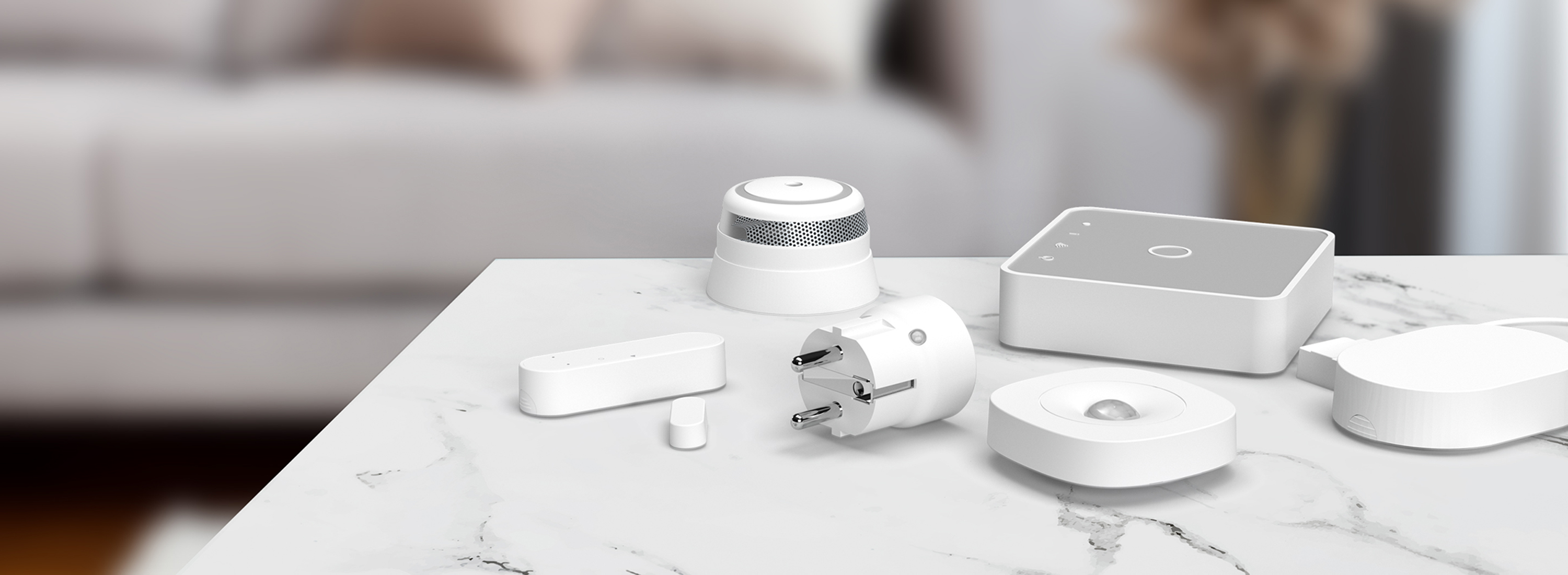Design your platform to fit your IoT solution perfectly
When deciding which wireless protocol to use for you IoT solution, it is important to consider the specific requirements of your solution and choose the wireless protocol that suits exactly your purpose. However, the best option for your solution may be to include several different wireless protocols. An open platform offers the opportunity to include multiple protocols, giving you freedom and flexibility in designing your solution.
Some of the most common wireless protocols include Zigbee, Z-Wave, Wireless M-Bus, and Bluetooth Low Energy (BLE), and WLAN. Learn what benefits each of these wireless protocols have to offer:
Zigbee
The Zigbee protocol is interoperable and standardizes network and application layers, so devices from different vendors can work together seamlessly. Zigbee is a mesh network, which is suitable for IoT solutions because it is a low-power, low-cost, reliable network with no single point of failure. Zigbee is the ideal protocol for smart energy and home automation because different Zigbee certified devices can be connected. As more Zigbee-based devices are linked, communication paths between the devices multiply, eliminating the risk of single-point signal failure. The Zigbee protocol is secure and stable, which is one of the reasons why it has become the flagship protocol of Develco Products and one of the world’s most widely adopted protocols.
Z-Wave
Z-Wave is a simple standard for wireless communication between home automation devices. Like Zigbee, Z-Wave is a mesh network, enabling multiple Z-Wave devices to communicate with each other simultaneously. Moreover, the protocol has a high level of interoperability. Z-Wave is designed for control, monitoring and status reading of household applications.
Wireless M-Bus
The Wireless M-Bus protocol enables remote and wireless readings of meters, which makes it suitable for communication between consumption meters and gateways. Wireless M-Bus can be used for electricity, water, gas, and heat meters. This protocol can provide reliable billing data to the utility company and near real-time visualization data to the user.
Bluetooth Low Energy
Bluetooth Low Energy (BLE) is suitable for devices that run on batteries, and with its low power consumption the protocol ensures a long battery lifetime. BLE is recognized for being interoperable across platforms, and it is easy to work with in development of new devices. BLE is suitable for sending small amounts of data with a high frequency, and it consumes very little energy in the process. This makes the protocol well-suited for use in home care and assisted living solutions in which close monitoring is needed.
WLAN
WLAN (also called Wi-Fi) is a Wireless Local Area Network which is applicable for connecting IoT devices over short distances. WLAN is useful for IoT solutions with a need for high data-rate and when there is a short distance between devices. Wi-Fi is suitable for IoT solutions that include cameras, for instance home security cameras.
The Squid.link Gateway is an open platform that offers the opportunity to include multiple protocols. It supports Zigbee, Z-Wave, Bluetooth Low Energy (BLE), Wireless M-Bus, and WLAN. Our open platform gives you the freedom to design exactly the IoT package you want to offer your customer. Furthermore, the platform future-proofs your solution, as multiple wireless protocols can be installed, and software is continuously updated over-the-air.
Would you like to know more about which wireless protocols would fit your solution? Ask our sales department.

